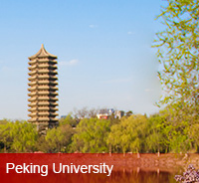New-Quality Productive Forces Emanate from both New Economy and Traditional Industries
Mar 28-2024
In the new economy and Fourth Industrial Revolution characterized by artificial intelligence and big data, China has many opportunities and might be able to use technological breakthroughs to turn Chinese standards into global ones, said Prof. Justin Yifu Lin in Boao Forum for Asia Annual Conference 2024. He is Dean of PKU Institute of New Structural Economics and Honorary Dean of PKU National School of Development.
Commenting on new-quality productive forces, Prof. Lin said that they refer to two types of innovation: one is utilizing three major advantages to achieve innovation in the new economy, and the other points to the late-comer advantages for enhancing productivity in traditional industries. He specified that the three advantages include ample human capital and talent pool, the world’s largest market, and the world’s best industrial setup. Its market size facilitates the realization of economies of scale, which would result in lower costs and higher competitiveness. As far as industrial setup is concerned, Tesla benefited tremendously as it achieved annual production of around 480,000 cars only one year after the founding of its Shanghai plant.
Prof. Lin pointed out that productivity is primarily driven by technological innovation. In terms of purchasing power parity (PPP), China has already become the largest economic body in the world; gauged with exchange rates, it is the second largest, with per capita income of about USD12,500. Prof. Lin believed that China will soon cross the threshold of high-income nations.
In traditional industries, China still has a great deal of advantages that are conducive for its catch-up efforts, he said. New-quality productive forces will arise when its strengths such as talents, market size, industrial setup, local comparative advantages are put to good uses alongside technological innovation and industrial upgrading.
Provided that China makes good use of its innovative potential in the new economy and catch-up potential in traditional industries while implementing some indispensable reforms, its economy will grow by over 5% this year, said Prof. Lin. He was confident that China will continue to be an important driving force for global development and contribute approximately 30% of the world’s economic expansion every year.







